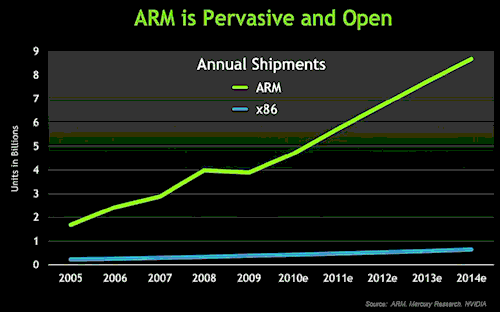In 2024, Intel Core i9-14900K Processor (24 cores) has 6.00 GHz speed, whereas ARM Cortex X4 processor (14 cores) has 3.4 GHz maximum speed.
| However, many mobile users now want and will pay for advanced features like mobile web access and location-oriented services, such as finding a nearby ethnic restaurant. This requires more processor power than basic cell phones have. |
SoC (System-on-Chip) Approaches
The key challenge that mobile processor designers face is providing low power consumption, high integration, and low cost in a package small enough to fit in a handheld device. To keep mobile processors small, vendors have adopted smaller feature sizes, and SoC approaches: integrating many system functions on a single chip. SoC designs can lower prices, increase reliability by reducing the number of system components, lower power consumption, and increase performance by reducing the distance over which data must travel.
ARM Ltd.
Traditionally, numerous companies have designed and sold mobile processors. Now, wireless-device vendors are focusing on just few chip architectures, and they are increasingly licensing cores and architectures predesigned by ARM, headquartered in Cambridge, England.
| ARM provides 32-bit embedded RISC (Reduced Instruction Set Computer) microprocessors with almost 90% of the market of mobile phones and tablet computers. |

|
|
“I’ve learned that you shouldn’t go through life with a catcher’s mitt on both hands; you need to be able to throw some things back.” ― Maya Angelou |